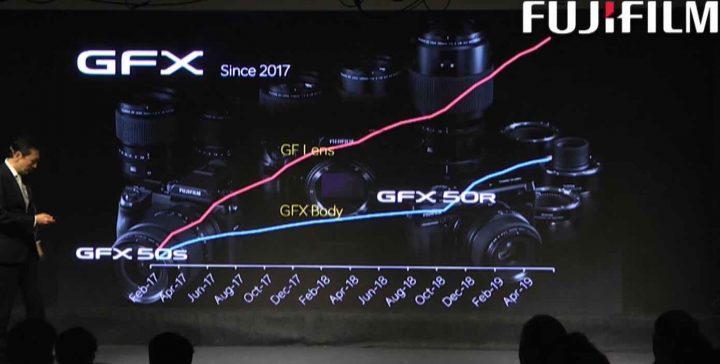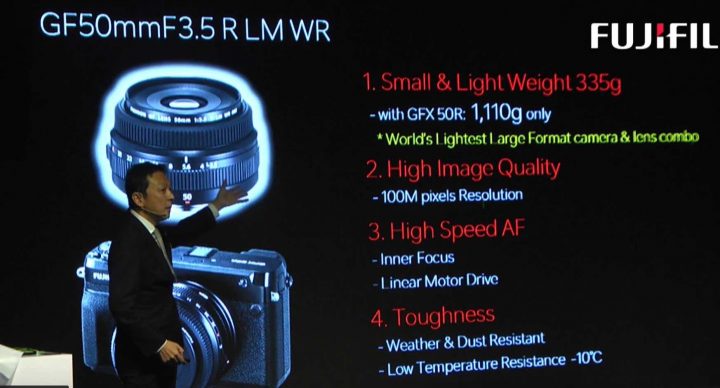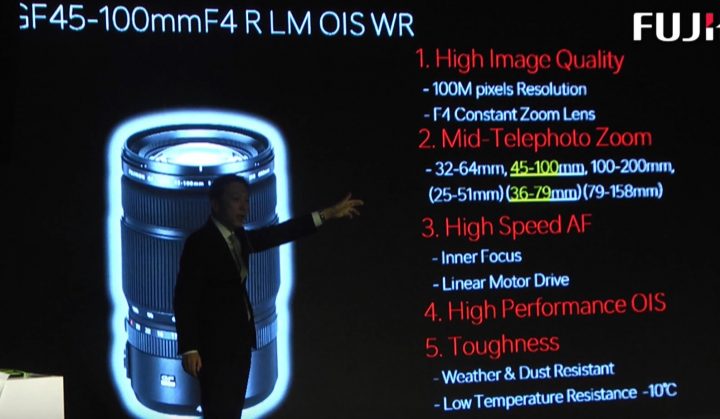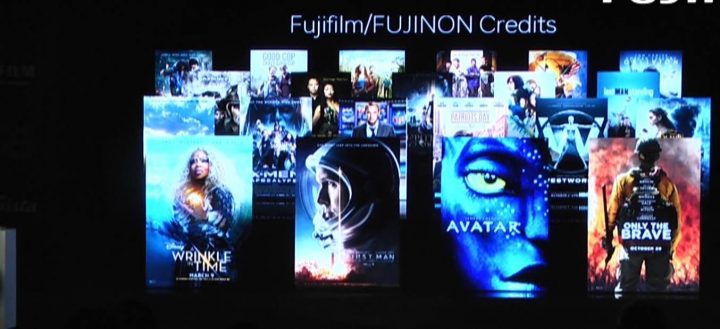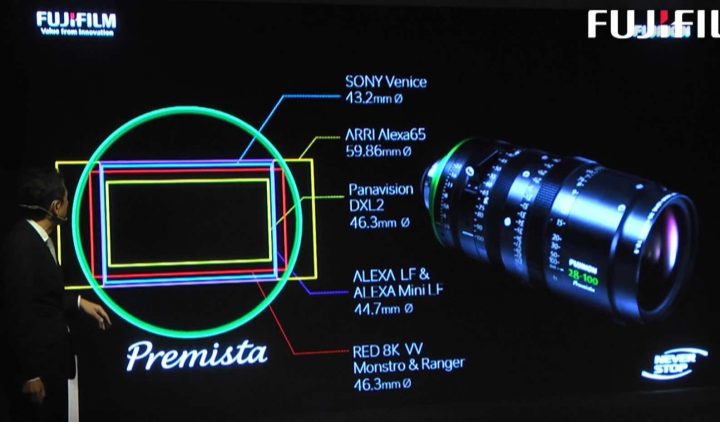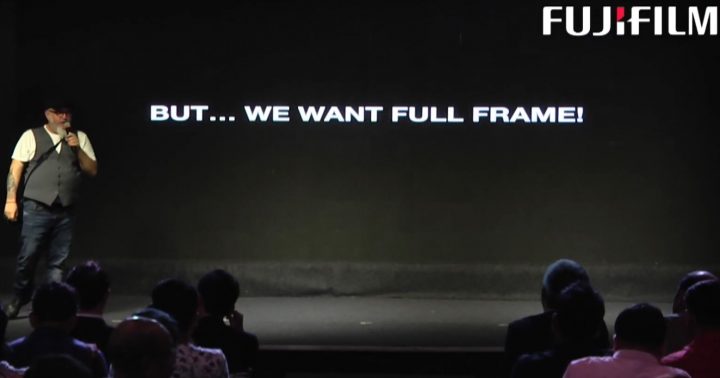Fujifilm Manager: “GFX100 Orders are Incredibly High”. Zack Arias: “I Might Sell my Phase One”
Fujifilm manager Toshihisa Iida was at the Fujifilm GFX100 launch event in India, along with Zack Arias.
Follow FujiRumors: Facebook, Flipboard, Instagram, RSS-feed, Youtube and Twitter
VIDEO SUMMARY
Lens Technology
- their broadcasting lenses have 40 lens elements
- when light passes through a lens, it loses 8% of the light (4% becuase of reflection, and 4% when passing through the glass itself)
- with 40 glass elements, only 3,6% of the initial light goes through all the lenses
- Fujinon HT-EBC and Nano GI coating technology minimizes the loss of light, hence allows 72,5% of the light to pass through 40 lenses
- Fuji’s coating technology allows for 20 times more light passing through all 40 lenses
- only Fujifilm and Canon can make 4K and 8K broadcasting lenses, but Fujifilm is way ahead
- he talks about the Fujinon Premista lenses
Color Science
- Fujifilm has 85 years of experience in color science
- at minute 26:14 Fujifilm compares the colors of the Fujifilm X-T3 with “3 other cameras in the same class from other brands“
- Toshihisa Iida makes a blind test with the audience, shows 4 video frames with skin tones, and ask the audience which one they prefer
- Camera A wins clearly the vote of the audience, and it turns out it is the Fujifilm X-T3
Fujifilm GFX System
- Toshihisa Iida says it’s strange to call the GFX sensor a medium format sensor
- Toshihisa Iida says they call it “large sensor in modern digital times“
- since 2017, the global shipment number for GFX cameras and lenses “has just kept growing“
- particularly the Fujifilm GFX50R contributed to the growth. He says “the sales peaked up dramatically and still carry on“
- the sale of GF lenses grew along with the increase of body sales numbers
- initial order for Fujifilm GFX100 is incredibly high, more than twice as many as Fujifilm expected [FujiRumors reported already it triples the original forecast]
- some people said 100 megapixel is an overkill
- Fujifilm is not just playing the megapixel numbers race. The Fujifilm GFX100 is a camera to preserve very important things for the future
- What kind of high-resolution screen devices and printing technology is waiting for us in future? For those times, we need to keep the current precious moments as highest possible recording data
- he talks about the BSI sensor, and how copper transfers data 60% faster than aluminium. This also minimizes noise
- more megapixel sometimes means more noise, but thanks to large format the GFX100 can go up to 102,400 ISO with very acceptable noise
- 14 stops of dynamic range
- he talks about the fast face/eye detecion and autofocus
- low light AF up to -2EV
- IBIS is the real breakthrough
- Toshihisa Iida says he can shoot at 1/8th without noticing shake in his images
- it was a real challenge to develop, since if the sensor tilts even ever so slightly, you lose 100 megapixel resolution. The light has to hit the sensor straight
- The “tilting tolerance” to make sure we don’t lose resolution with IBIS, is 20 micormeters out of 55 millimeter (hence 0.04% tolerance)
- GF lenses are designed for over 100 megapixel resolution
- GF50mm f/3.5 weights 335g only and still resolves 100 megapixels. Combined with the Fujifilm GFX50R, it will be lightest medium format camera/lens combo on the market
Premista Lenses / Cine lenses
- he shares a list of cameras covered by the Fujinon Premista lenses (screenshot below)
- he shows a list of movies that were shot with Fujinon Cine lenses, amongst them also Avatar (screenshot below)
- they show the Fujifilm GFX100 working together with the Fujinon Premista lenses
Zack Arias Showtime
- Zack Arias goes on stage at minute 1:05:21
- in film times, 35mm was for amateurs, and medium format for professional work
- Zack was at an exhibition 7/8 years ago. All great images. But one print stood out. He told the photographer, who took the images and was present in the gallery, that something makes this print special. The photographer told him “medium format, mate. Medium Format“
- So Zack went on and bought a Phase One
- Zack said he wanted the 50 megapixel Phase One, but the store owner told him he should try for 1 week the 100 megapixel version, and if he don’t like it, just bring it back and they give him his 50 megapixel medium format camera
- Zack insisted that he didn’t need 100 megapixel, and wanted the 50 right now
- The store owner pushed him to try it for at least one week
- Zack accepts, and they day after he called the store owner and said he will buy the 100 megapixel
- Zack tells his client that with the GFX100 he can extract their DNA from the image and clone them
- He tells an episode, where the dynamic range of medium format saved a shoot where he messed up
- he praises the flexibility of medium format files
- he tells about his switch from Canon full frame to Fujifilm APS-C
- he printed images from Canon FF and Fuji APS-C, and the difference was just negligible
- between FF and APS-C, prints do not stand out. But medium format prints stand out compared to APS-C
- his Phase One medium format is a tripod camera, and shooting with it is a very slow process
- you can have 5 GFX100 for the price of one Phase One
- Zack says he might sell his Phase One now that the Fujifilm GFX100 is out
Follow FujiRumors on Facebook, Flipboard, Youtube, Instagram, RSS-feed and Twitter
Rumors and Discussions: Fujifilm GFX User Group / Fujifilm GFX Page


